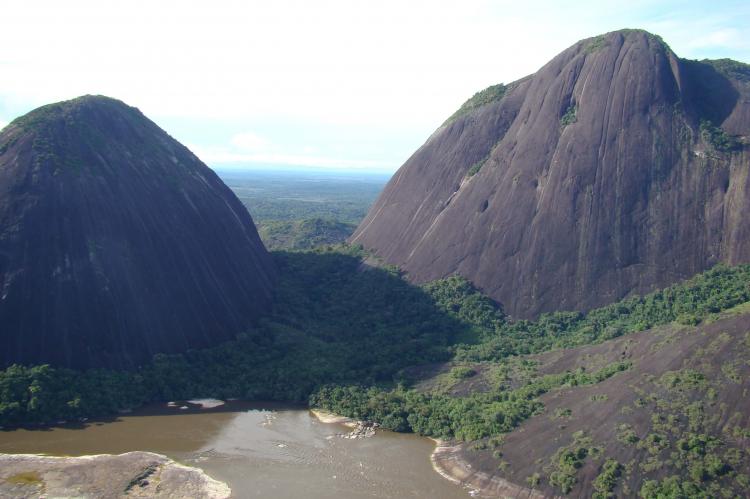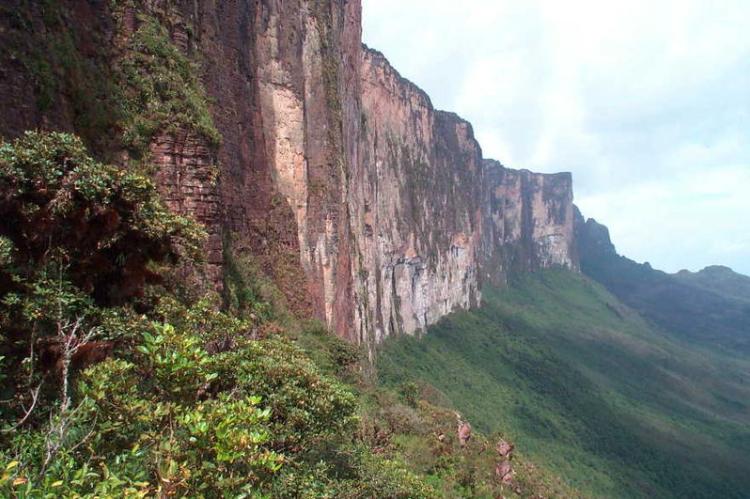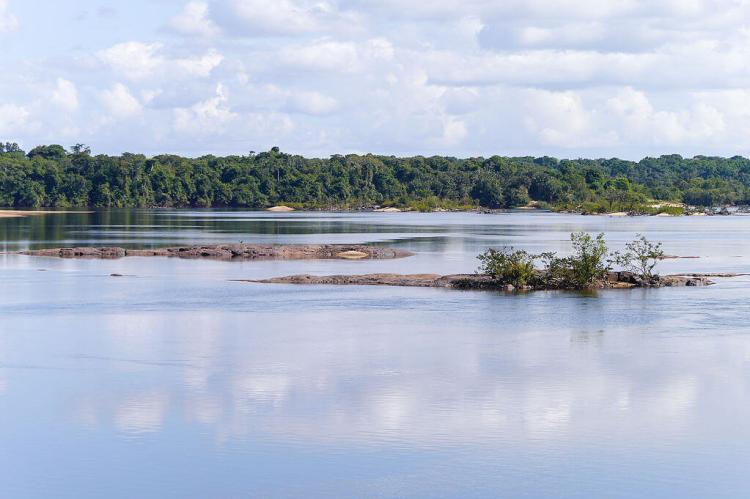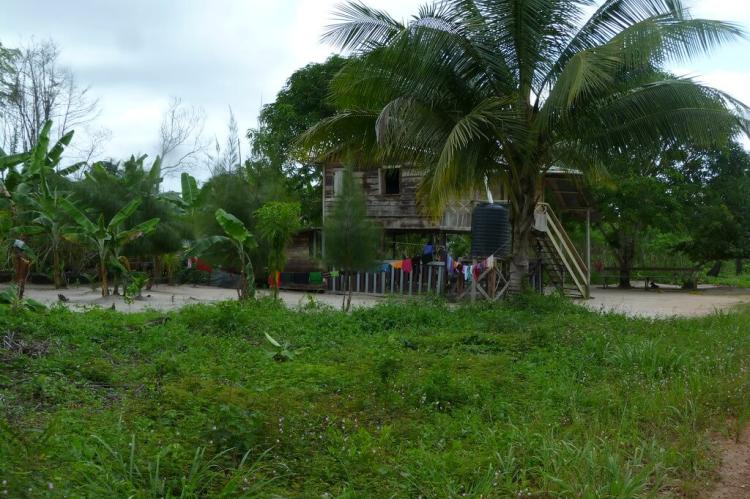The Guiana Shield and Highlands: A Geological and Ecological Symphony
The Guiana Shield is one of the three cratons of the South American Plate. It is a 1.7 billion-year-old Precambrian geological formation in northeast South America that forms a portion of the northern coast. The higher elevations are known as the Guiana Highlands.
The Guiana Shield and Highlands
A Geological and Ecological Symphony
Draped across northeast South America, the Guiana Shield is a testament to the Earth's ancient history. Dating back 1.7 billion years, this Precambrian formation forms a craton of the South American Plate, shaping the landscape of Guyana, Suriname, French Guiana, Venezuela, Colombia, and Brazil. Beyond its geological marvels, the Guiana Shield is a haven for biodiversity, with the Guiana Highlands as its crown jewel.
Guiana Shield: Geological Tapestry and Biodiversity Haven
The Guiana Shield unfolds as a geological masterpiece, displaying a rich collage of ancient formations that have stood the test of 1.7 billion years. Composed of metamorphic rocks, the shield showcases intricate layers of metasediments, greenstones, and sub-horizontal formations, including sandstones, quartzites, shales, and conglomerates. These formations are not merely rocks but a chronicle of Earth's primordial history, revealing the dynamic processes that shaped this venerable shield over eons.
The canvas of the Guiana Shield is further enriched by intrusions of younger mafic rocks, such as gabbros, which inject a layer of dynamism into its geological makeup. These geological nuances set the stage for the birth of the world's largest expanse of tropical forest on any Precambrian shield, creating a landscape that weaves together the threads of ancient Earth processes and the vibrant life that now flourishes upon it.
Biodiversity Marvels:
The Guiana Shield is a geological relic and a biodiversity haven, a sanctuary for life unparalleled in its richness and diversity. Hosting over 3,000 vertebrate species, the shield emerges as a treasure trove of unique and endemic life forms. Endemic fish species navigate the pristine waters in its freshwater ecosystems, while amphibians, reptiles, birds, and mammals find their home within the lush forests. This biodiversity extends beyond mere numbers; it is a living testament to the shield's ability to support life in all its forms.
The shield has become a vital hub for ecological research and conservation, drawing scientists and conservationists worldwide to study and protect the delicate balance of species that call the Guiana Shield home. It is a living laboratory where each rare or abundant species contributes to the intricate web of life that defines the shield's ecological marvels.
Distinctive Upland Areas:
Within the vast expanse of the Guiana Shield, three distinctive upland areas contribute to its topographical diversity, each adding a unique dimension to the shield's grandeur:
Guiana Highlands: Stretching from Venezuela to Brazil, the Guiana Highlands unfold as a forested plateau and low-mountain region. The landscape is dominated by tepuis, table-like mountains that rise majestically from the Earth. These tepuis shape the highlands' visual identity and serve as ecosystems unto themselves, hosting unique flora and fauna adapted to the challenging environments of their summits. The highlands are punctuated by breathtaking waterfalls, including Angel Falls and Kaieteur Falls, which cascade from the tepuis, adding a touch of grandeur to the already enchanting landscape.
Tumucumaque Uplands: Forming an arc across Suriname, Guyana, and Brazil, the Tumucumaque Uplands stand as central massifs sloping gently towards the Amazon River and the Atlantic Ocean. This region contributes to the shield's topographical diversity, transitioning from the elevated highlands to the lower-lying expanses. The gentle slopes and diverse ecosystems make this area essential to the Guiana Shield's geographical and ecological mosaic.
Chiribiquete Plateau: Situated at the western edge of the shield, the Chiribiquete Plateau is a sandstone-topped marvel with an elevation of 900 meters (2,950 feet). This plateau, distinct in composition, forms a boundary between the Guiana Shield and the eastern Andes. Separated by the thick Neogene sediments of the Sub-Andean Trough, this plateau is a testament to the shield's intricate geological boundaries. The Chiribiquete Plateau adds a final touch to the shield's diverse topography, showcasing the nuanced variations in elevation and landscape that define this ancient formation.
In summary, with its geological intricacies, thriving biodiversity, and distinctive upland areas, the Guiana Shield emerges as a geological and ecological symphony. It is a landscape where ancient rocks and vibrant life converge, creating a masterpiece that invites exploration, research, and conservation for both present and future generations.
Guiana Highlands: The Enchanting Tableau of Tepuis and Rainforests
Geographical Coverage:
Nestled within the embrace of the Guiana Shield, the Guiana Highlands stretch across the southern half of Venezuela, encompassing the Guianas, northern Brazil, and southeastern Colombia. This expansive region blankets over 1,776,046 square kilometers (685,735 square miles), creating a sprawling canvas that captures the imagination with its diverse landscapes. From the undulating lowlands to the towering plateaus, the Guiana Highlands showcases the geographical richness that defines this ancient formation.
Table-Like Mountains (Tepuis):
The Guiana Highlands unveil a captivating spectacle of heavily forested plateaus and low mountains punctuated by the iconic table-like formations called tepuis. These geological wonders, rising majestically from the surrounding landscape, add a touch of mystique to the highlands. Mount Roraima stands as a sentinel of time, its flat summit shrouded in legend and inspiration for Sir Arthur Conan Doyle's "The Lost World."
Tepuis, such as Mount Roraima, are not merely mountains; they are living entities, harboring unique ecosystems adapted to the challenging conditions of their summits. These towering plateaus contribute to the enchantment of the Guiana Highlands and serve as natural landmarks, telling stories of geological epochs and shaping the biodiversity that thrives within their realms.
Biodiversity and Protected Areas:
The Guiana Highlands unfold as a haven for biodiversity, harboring a rich tapestry of plant life that surpasses 13,000 species of vascular plants. This floral abundance is even more remarkable because approximately 40% of these species are considered endemic to the region, underscoring the uniqueness of the highlands' ecosystems. The Guianan rainforest, reminiscent of its counterpart in the Amazon, flourishes in this fertile landscape, providing a home for an astounding array of flora and fauna.
Protected areas within the Guiana Highlands play a pivotal role in safeguarding this biological wealth. Each protected zone becomes a sanctuary, preserving the delicate balance of ecosystems and allowing researchers and conservationists to study and understand the intricate relationships within. Notable among these areas are:
-
Iwokrama Forest, Guyana: This reserve serves as a living laboratory for sustainable forest management, promoting research and conservation while providing a model for responsible land use.
-
Kaieteur National Park, Guyana: Home to Kaieteur Falls, one of the world's most powerful waterfalls, this park protects a unique ecosystem and contributes to biodiversity conservation within the Guiana Highlands.
-
Canaima National Park, Venezuela: Encompassing iconic tepuis like Mount Roraima, this national park is a UNESCO World Heritage Site, celebrated for its exceptional natural beauty and cultural significance.
These protected areas ensure the preservation of the Guiana Highlands' biological wealth and offer opportunities for eco-tourism, allowing visitors to witness the splendor of this enchanting tableau while fostering sustainable practices that benefit both nature and humanity. In the heart of the Guiana Highlands, the symbiotic relationship between geological marvels and thriving ecosystems continues to unfold, inviting exploration and appreciation for the wonders of this ancient and captivating landscape.
Conclusion: Guardians of an Ancient Legacy
In the heart of the Guiana Shield and Highlands, the symphony of geological formations and ecological wonders plays on. The ancient legacy of this region, etched over 1.7 billion years, unfolds in a story of resilience and diversity. As we explore its craggy landscapes, encounter tepuis, and witness the dance of endemic species, it becomes clear that the Guiana Shield is not just a geological marvel but a living testament to the intricate interplay between Earth's history and the thriving ecosystems it nurtures. In the embrace of the Guiana Highlands, the guardian tepuis stand tall, echoing the tales of an ancient land that continues to enchant and inspire.
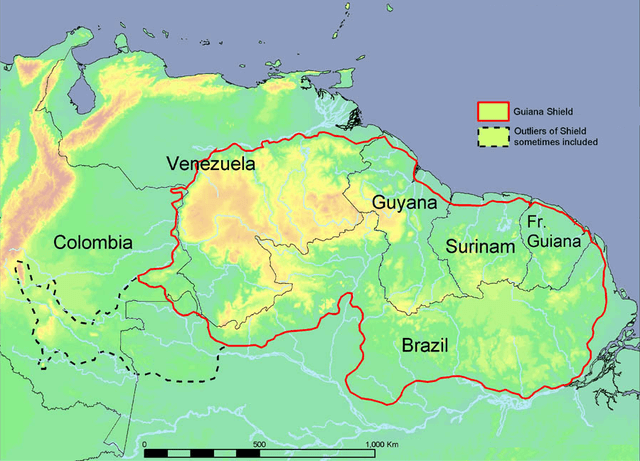
Political map of the Guiana Shield.
